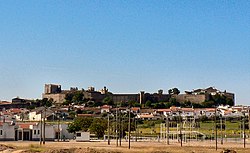
Serpa is a city and a Concelho (municipality) in the central Portuguese region Alentejo. The population in 2011 was 15,623, in an area of 1,105.63 square kilometres (426.89 sq mi). The Guadiana River flows close to the town of Serpa.

The Castle of Elvas is a medieval military fortification in Portugal, in the civil parish of Alcáçova, municipality of Elvas, part of a first line of defense in the Portuguese Alentejo, in conjunction with the military forts of Ouguela, Campo Maior, Olivença and Juromenha.

The Castle of Castelo Rodrigo is a medieval castle in the civil parish of Castelo Rodrigo in the municipality of Figueira de Castelo Rodrigo, district of Guarda in Portugal.

The Castle of Beja is a medieval castle in the civil parish of Beja, municipality of Beja, Portuguese district of Beja.
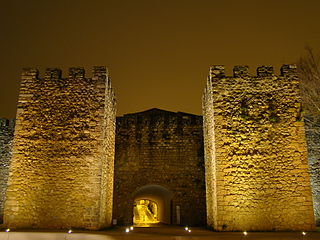
The Castle of Lagos is a medieval castle located in the municipality of Lagos, Portugal. Its walls surrounded the entire city of Lagos, providing the town its main means of defence.
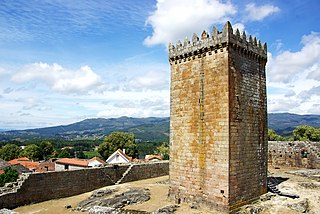
The Castle of Melgaço is located in Vila parish, Melgaço municipality, Viana do Castelo district, in Portugal.

The Castle of Vinhais is a medieval castle located in the civil parish of Vinhais, municipality of Vinhais, Portuguese district of Bragança.
The Castle Hill of Miranda, also known as the Fortress Hill, is a medieval castle located in the village of Outeiro in the district of Bragança, Portugal.
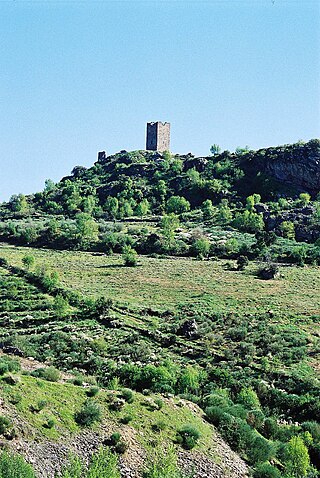
The Castle of Penas Roias is a Portuguese medieval castle in the civil parish of Penas Roias, municipality of Mogadouro, in the Portuguese of district of Bragança.

The Castle of Bragança is a well-preserved medieval castle located in the historic center of the city of Bragança, district of Bragança, Portugal.
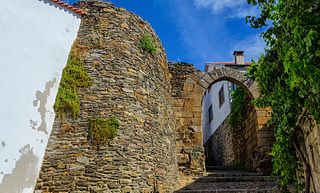
The Castle of Vila Flor is a medieval castle located in the civil parish of Vila Flor e Nabo, municipality of Vila Flor, Portuguese district of Bragança.

The Castle of Lindoso is a medieval castle in the civil parish of Lindoso, municipality of Ponte da Barca, in the Portuguese district of Viana do Castelo.

The Castle of Tavira is a medieval castle located in the parish of Santiago, Tavira municipality, Faro district of Portugal. In a dominant position over the mouth of the river Gilão, the settlement has developed as an important sea port since antiquity, with its predecessors dating back to the 8th century BC, passing through the hands of Phoenicians, Greeks, Celts, Carthaginians, Romans, Moors and the Portuguese crown.
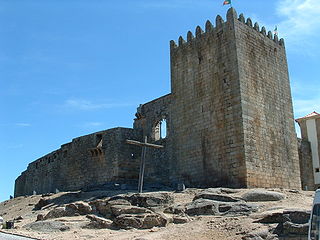
The Castle of Belmonte is a medieval castle located in the municipality of Belmonte, Castelo Branco district in Portugal.

The Castle of Moura is a Portuguese medieval castle in civil parish of Moura e Santo Amador, in the municipality of Moura, in the district of Beja.

The Castle of Borba is a medieval castle located in the civil parish of Borba, municipality of Borba, Portuguese district of Evora.

The Castle of Portel is a medieval castle located in the municipality of Portel in the district of Evora in Portugal.

The Castle of Noudar is a Portuguese medieval castle in the civil parish and municipality of Barrancos, in the district of Beja.
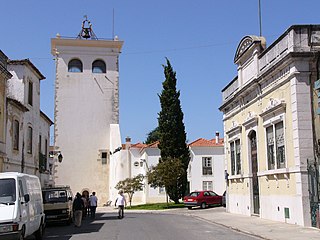
The Castle of Santarém is a medieval castle located in the city of Santarém in the Portuguese county and district of Santarém.

The Castle of Monforte, also referred to as Castelo de Monforte de Rio Livre, is a medieval castle located in the Águas Frias parish, Monforte de village, Chaves municipality in Vila Real district of Portugal.
